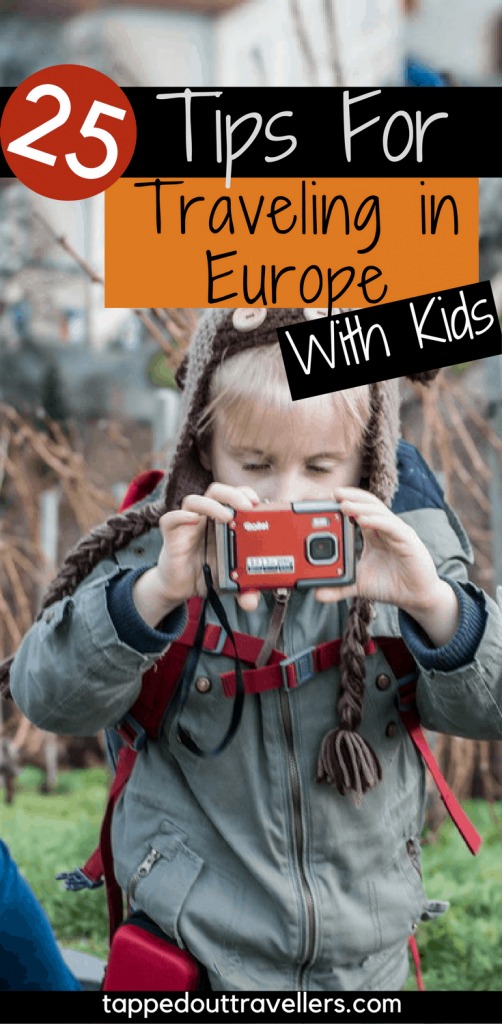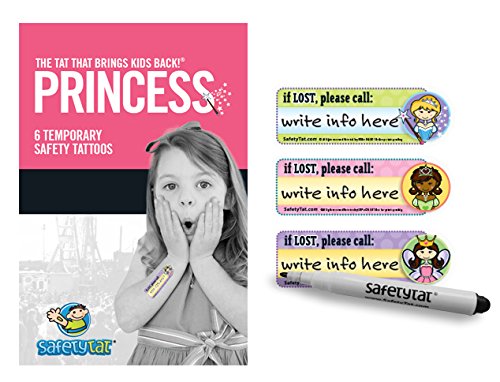Last Updated: December 1, 2017
Kids have a mind of their own on the best of days. Planning a successful vacation with the children doesn’t have to be painful or expensive when their needs are taken into consideration and certain accommodations are made. Speaking from years of experience, here are some great tips on how to successfully travel in Europe with kids
[toc]
Traveling in Europe with Kids
Traveling in Europe with kids isn’t like traveling in Asia or in North America. There are a ton of things to do, right next to each other, and it can be overwhelming at times. Making a “battle plan” for the day’s activities is the best way to keep nerves calm, see what you want to see and save time/money at the same time. Here are our tips for traveling in Europe with kids.
Slow is best.
Take your time in each location. Going too fast only adds to the kids’ burn out and overstimulation. Try not to visit too much in one day; Google locations has a great little review section where people mention how much time they have spent or would recommend you allocate to each activity/experience. Take these into consideration.
Plan downtime
Plan a few things just for the kids, either by visiting a kids’ museum or visiting a playground. This is when the kids get to blow off some pent-up energy and just be themselves. You will soon find that the more you allow them to do, the more willing they are behave while fulfilling mommy and daddy’s bucket list.
Don’t always go to the cities
Not every vacation needs to be in a large city. While we have done our fair share of city-scaping, taking time to explore the countryside also has its benefits. A nice resort on the beach, hiking the trails or skiing with the family; there is something for everyone.

They will be jetlagged for a few days.
Don’t plan too much for the first day or two. Learn more about how to deal with jetlag by clicking here.
Bring your own snacks
Having a little bit of home not only reduces costs while on vacation but lower the children’s anxiety. While in a strange place, with strange sights and sounds, having that familiar snack can ease their nerves and settle them down just long enough to accomplish a task or two.
Budget airlines are not always the best option
While finding the best deal on a flight around the world sounds like the greatest accomplishment of your planning stage, there are unforeseen drawbacks to saving money. The departure times and layover lengths, for example, may get the vacation going on a rough start. Do they provide in-flight entertainment and are drinks provided? The devil is in the details.
Check-in online
Checking in online means you don’t have to wait in the drawn-out queue at the airport to print your boarding passes and drop off your bags. Going Carry-on only? Even better, no lines for you today.
Also, checking in online means you can choose your families seats and ensure you are all together and in an area of the plan that you feel most comfortable. We don’t want to be too far away from the toilets, or too close either.
1 checked bag per family
This both saves money and a headache. Most budget airlines allow guests to purchase carryon only seats and add a number of checked bags to the reservation. By booking this way, you can have your 4 seats, and only one checked bag.
The headache comes from waiting at the carousel for your luggage and lugging them around the city and to your hotel. By only having one checked bag, you alleviate that stressor. Now one parent can focus on the children and the other on the bag, instead of both parents pulling double duty.
Carry-on only when you have kids that can help
For every child that is capable of pulling their own carry-on bag without assistance, for the duration of the journey, they should be allowed to do so. This will help lower the cost of checked bags, as well as free mom and dad’s hands for more important things, like duty-free packages.
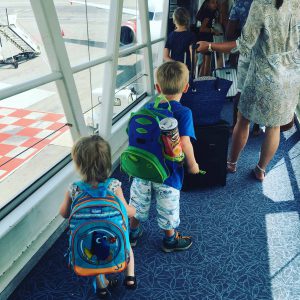
Taking the train? Carry-on only
The storage compartments in trains are not the largest, and they do not hold much. The overhead bins, on the other hand, are made to hold a carry-on suitcase and can fit just about one piece per seat. This has the added advantage of never being too far away from its owners, making theft or damage less likely (though never impossible)
Packing Cubes
Packing cubes are a life saver. Having everyone’s clothes neatly divided into cubes means no more rummaging and giant messes in the suitcase. One can also easily transfer the contents from the suitcase to the hotel dressers easily.

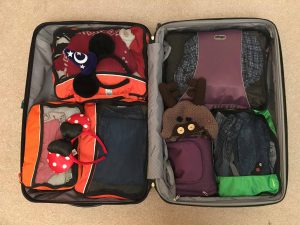
Use a stroller that is small and compact, but durable
Not all strollers were created equally. Some are made for day to day activities, some for less active families and even others for more off-roading needs. A compact, flat, durable stroller can be hard to find, and even harder on a tight budget but we have never regretted getting a proper travel stroller. The smaller and more compact, the less likely of it being damaged in transit, and will also fit in your hotel room that much better.
Baby carrier
When all else fails, have a baby/toddler carrier. Not all buildings are meant to allow strollers and even less have free, guarded stroller parking. If the stroller needs to be left at home, or in the hotel room, having a backup to managing the little ones is imperative.
Refillable water bottle
Instead of buying a new bottle each day, simply purchase a good, possibly collapsible water bottle and refill it in the hotel room each morning.
Cities like Zurich and Rome have perfect tasting drinking water, free of charge, right from the town’s fountains. Don’t be caught buying water when you don’t have to.

Traveling in Europe by Train with kids
Traveling Europe by train is the easiest and fastest way to get from one major city to another. And a quick transfer can get you to those more remote locations with just as much ease. Train travel means you don’t have to worry about cramped spaces, bathroom breaks or nap time – everything is at your disposal. There are, however, a few considerations and planning procedures that need to be taken before embarking on such a scheduled adventure.
Seat reservations
Get seats in the compartment or near the door to keep an eye on the luggage. Furthermore, the earlier you book, the cheaper they are. Just like airline tickets, everything is based on supply and demand, and prices get increasingly more expensive the closer you get to your travel date. Seats also become increasingly harder to find, in a group.
You May Also Like
The ugly side of traveling with kids
picking the right Carry-on bag
Bring your own snacks
This goes back to my earlier point of cutting cost and having comfort food for the kids. Being prepared for the unexpected delay also serves as a reason to at least stash a few snacks for a “rainy day”.
Stations are not all stroller friendly
While Europe is chock full of train stations, very few of them are stroller or handicap friendly. They will have the odd freight elevator but when multiple platforms are common in the larger cities, or tunnels that run under the train tracks in remote locations, lugging a stroller on your own is not comfortable and not always practical. Know which stations and platforms are accessible and plan accordingly.
Activities and headphone splitters
Have a few activities in your proverbial back pocket to keep the little ones happy. Be it colouring books, a game of tic tac toe or even a pack of stickers, anything to keep them happy for just a few minutes longer.
As for the headphone splitters, sometimes technology fails us and the kids need to share. A pair of headphone splitters will help settle most arguments – once they have decided what to watch, of course.
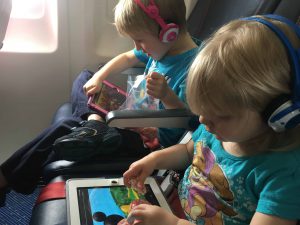
While tablets and iPods can only pair with one set of Bluetooth headphones, there are a few brands out there that allow their headphones to be converted to wired headphones, then attached to a headphone splitter. Our personal favorite is the Kidz gear Bluetooth headphones – they come with a set of AUX cables so you don’t need to buy anything extra.
Getting around in Cities in Europe with kids
Once you have arrived, it is time to find your hotel and get out into the city. City vacations are different than “off the beaten path” vacations. There are significantly more people around you, making transit and travel time a real concern, as well as distances needing covering in order to reach each activity/attraction. These tips are for getting around in cities in Europe with kids.
Taxi from hotel to airport
The majority of international airports aren’t actually within the city limits. Taking public transit may be the cheapest form of transportation, but it could be the longest option. Take into consideration how the kids are feeling after the journey, how you are feeling, and how will everyone manage the luggage and personal security while in transit. While a taxi isn’t the most economical choice, it may be your best choice. Check your options before heading out so you know what to expect when arriving.
Kids under 5 get free metro in most cities
Once you are in the city, public transit becomes the fan favorite mode of transit. The kids love the freedom of sitting in their own chair and looking out the window. Grab a 24hr or more city card for the adults and remember that all kids under 5 get to ride free with their parents – be sure to ask the selling agent about these rules, as they may assume the age of the children and charge you more than necessary.
Metro stations not very stroller friendly
While taking the local tram is the best way to get to and from a location, the stations themselves may not be amazing. Check out the transit maps for locations of handi/stroller friendly stations and make appropriate modifications to your schedule. Do you get out a few stops early so you have access to an elevator, will you collapse the stroller and take the stairs, maybe use a carrier while visiting that section of the city? Know before you go.
Plan ahead if separated from the kids
If the kids are old enough to walk on their own, without holding hands, make sure they know what to do if they get separated. Even the younger ones should have a little information on their person just in case they wander away.
As our friend Special Agent Oso taught us, there are 3 steps to finding help; 1 – stay put. Moving around after getting lost only makes it that much harder for someone to find them. 2 – ask a grown-up for help. Preferably someone with a badge (if they are in a store, an employee, or police officer), but a parent can also be approached – this means they can ask anyone that has a child with them. 3- Tell them “my name is… and I’m lost”.
Smaller children need to know the difference stranger-danger and helpful-citizen. What information are they allowed to tell and what do they keep to themselves. Preferably, all they are allowed to say is their name and their parent’s name. If they know a phone number, this is also great to give but a note in their pocket or safety-tattoo on their person is best at this age.
Booking family-friendly accommodations in Europe
Hotels and other forms of accommodations in Europe are not the same as in North America. We were used to standard rooms with two double beds and that was it. In Europe, there are a great number of variations and different types of accommodations outside the chain-hotel brand. Some have 1 double bed, some have 3 single beds, and some have bunk beds, it all depends on your needs and how much you are willing to pay for that Perfect room.
Most hotel rooms are small and have occupancy restrictions
Rooms don’t have an excess of space. With so many tourists and only so much room to build, Europeans are used to everything being a little smaller. Homes are smaller, yards are smaller, hotel rooms are smaller. This is normal, so don’t expect your $200-night room to look like the Presidential Suite.
Also, when they state that only 4 people can stay there, this is law, not personal preference. According to the fire code, they are only allowed so many persons in each room and they are very strict. Babies count as a person; be sure to check if and how many children are allowed on top of this occupancy restriction. On booking.com they state specifically if 1 child is allowed free of charge when using an existing bed. This means you are not charged for the extra body, but they will not provide a spare bed. A baby bed can be requested, and they may charge for this service.
Apartments are generally best, as they have 2 rooms; Bedroom and living room
Apartments, still reserved through Booking.com, have proven to be the best choice financially and physically, for families. There are separate rooms for the children to sleep, meaning mom and dad aren’t forced to bed at 8 pm, and there is an optional kitchen. When a kitchen is available, breakfast is not included, but this also means you can feed the kids what they like without paying for a buffet full of foods they don’t like.
Not all hotels have an elevator.
If your party requires an elevator, check the fine print for all bookings. Chain-brand hotels typically have an elevator or two but they tend to cost more than local hotels and apartments.
If a stroller is required, consider leaving it in the car or behind the front desk while not in use.
You may also like:
Proper Winter Gear For The Whole Family
Hotel Expectations for Families with little ones
How to Find Cheap Accommodations for Families
Best Toddler Travel Beds for more information
Do you need a stroller for your next vacation?
Opportunity Cost- the high cost of low budget
